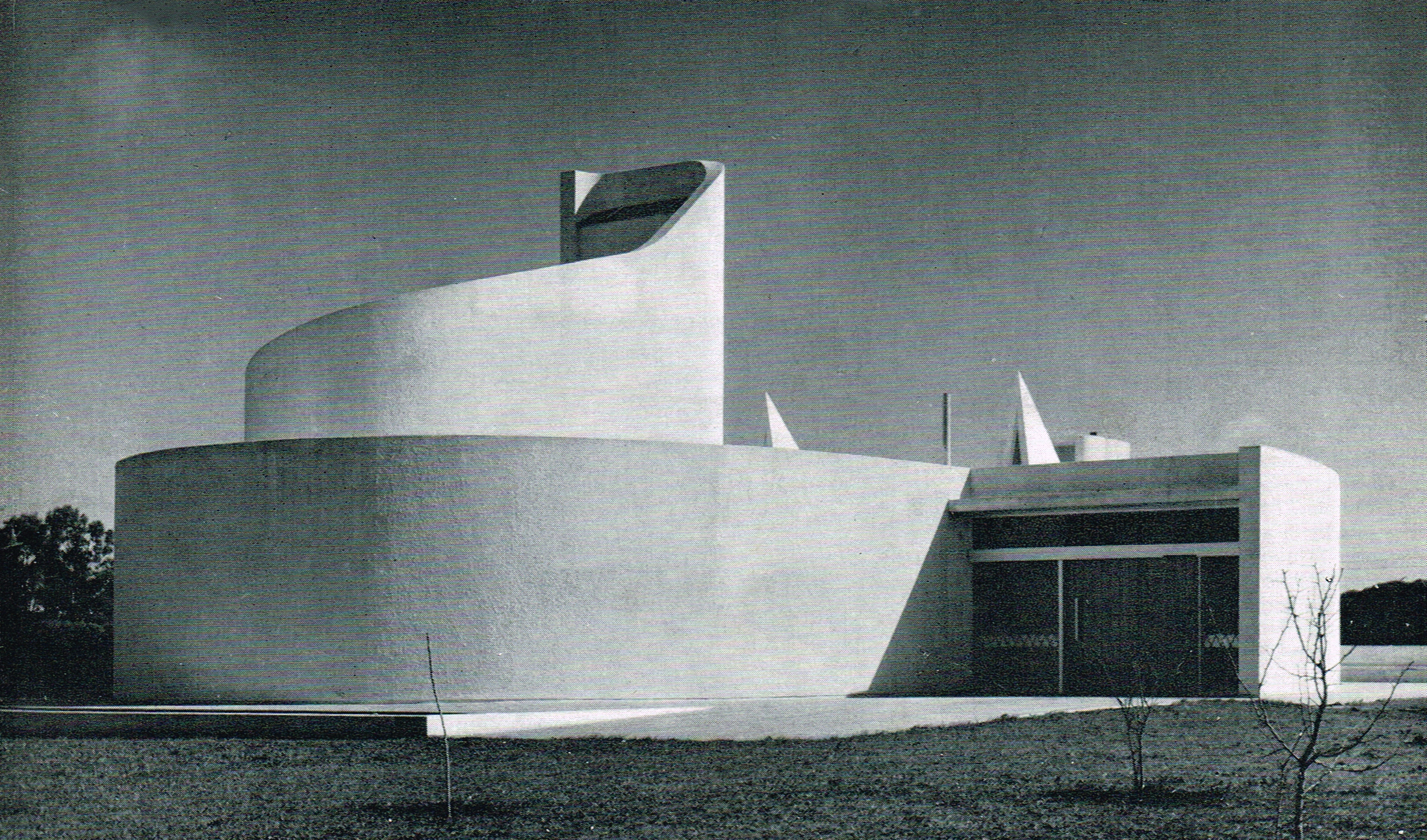Architecture as a concrete sculpture
The Temple of the Israelite Cemetery of Mar del Plata, Argentina (1961-1963)
DOI:
https://doi.org/10.18861/ania.2023.13.2.3458Keywords:
modern architecture, concrete art, geometry, form, Horacio Baliero, Carmen CórdovaAbstract
This paper proposes to show the shared aspects between the architectural resources brought into play for the formal generation of the temple of the Israelite Cemetery of Mar del Plata and the features of concrete sculpture. From the detailed description of the work and distinguishing the design strategies that shaped it, we will try to demonstrate the existence of a geometric condition in its genesis, the conformation of a dynamic space and the delineation of a rational form that responded to the particularities of the programme. These aspects coincided with the parameters developed by the sculptural productions of concrete art. These relationships will be affirmed from the specific location of the authors - Carmen Córdova and Horacio Baliero - in the cultural fabric of 1950 in Buenos Aires and their developments from the oam group.
Downloads
References
Acuña, V. (2004). “Carmen Córdova, Jugarse por las ideas es renunciar a aceptar”. En Revista Sociedad Central de Arquitectos (2004), 3-11. https://docplayer.es/60030503-Carmen-cordova-jugarse-por-las-ideas-es-renunciar-a-aceptar.html
Alcaide, C. (1997). “El arte concreto en la Argentina. Invencionismo. Madí. Perceptismo”. En Arte, individuo y sociedad, vol. 9, 223-244. https://revistas.ucm.es/index.php/ARIS/article/view/ARIS9797110223A
Bill, M. (1955). “La concepción matemática en el arte de nuestro tiempo”. En Maldonado, T. (comp.). Max Bill. Buenos Aires: Nueva Visión, 33-65.
Brasil, D. (2016). Horacio Baliero e a construção da paisagem: O caso do Cemitério Parque de Mar del Plata. Porto Alegre: Universidade Federale do Rio Grande do Sul. https://www.lume.ufrgs.br/handle/10183/150805
Bustamante, M. S. (2016). Horacio Baliero: del dibujo a la obra construida. Análisis Gráfico del Colegio Mayor Argentino Nuestra Señora de Luján en Madrid (1962 - 1970). (Tesis de maestría en Escuela Técnica Superior de la Universidad de Valladolid). https://repositorio.upct.es/handle/10317/11252
Bustamante, M. S. (2022). “Las líneas curvas en el horizonte. Horacio Baliero y su obra gráfica”. En Actas XIX Congreso Internacional de Expresión gráfica. Colombia: Universidad Politécnica de Cartagena, 139-142. https://uvadoc.uva.es/handle/10324/23178
Crispiani, A. (1997). “Belleza e Invención”. En Revista Block, n° 1. Buenos Aires: UTDT, 61-70. https://hdiunlp.files.wordpress.com/2011/09/crispiani-belleza-e-invencion1.pdf
Crispiani, A. (2004). “Entre dos mundos: el largo viaje de la Buena Forma”. En Revista Block, n° 6, 40-49. https://repositorio.utdt.edu/handle/20.500.13098/11373
Crispiani, A. (2011) Objetos para transformar el mundo. Trayectoria del arte concreto-invención entre Argentina y Chile, 1940-1970. Buenos Aires: Universidad Nacional de Quilmes, Prometeo, ARQ Editorial.
Deambrosis, F. (2011). Nuevas visiones: revistas, editoriales, arquitectura y arte en la Argentina de los años cincuenta. Buenos Aires: Infinito.
Devalle, V. (2009). La travesía de la forma. Emergencia y consolidación del Diseño gráfico (1948-1984). Buenos Aires: Paidós.
García, M. A. (2011). El arte abstracto. Intercambios culturales entre Argentina y Brasil. Buenos Aires: Siglo XXI.
Geertz, C. (2003). “Descripción densa: hacia una teoría interpretativa de las culturas”. En La interpetación de las culturas. Barcelona: Gedisa, 19-40. https://metodos.files.wordpress.com/2008/03/descripcion_densa.pdf
González Montaner, H. y Sabugo, M. S. (2014). Horacio Baliero/cátedra Baliero (FADU-UBA). Buenos Aires: Arte Gráfico Editorial Argentino.
Liernur, J. F. (2004). “Horacio Baliero”. En Liernur, J. F. y Aliata, F. (comp.) Diccionario de Arquitectura en la Argentina estilos, obras, biografías, instituciones, ciudades, vol. 1. Buenos Aires: Clarín Arquitectura. http://www.iaa.fadu.uba.ar/omp/index.php/iaa/catalog/view/diccarqarg/17/42
Liernur, J. F. (1998). “La importancia de Ser Ernesto”. En Katzenstein, I. (edit.). Ernesto Katzenstein arquitecto. Buenos Aires: Fondo Nacional de las Artes.
Maestripieri, E. (2017). “Piedra Líquida”. En Astragalo, n° 22, 21-38. https://dialnet.unirioja.es/servlet/articulo?codigo=7023444
Quiroga, C. (2021). “Carmen Córdova, los paisajes y la memoria de la modernidad”. En Perspectivas, vol. 4, n° 3, 175-200. https://revistas.ub.edu.ar/index.php/Perspectivas/article/view/154
Romero Brest, J. (1953). Qué es el arte abstracto. Cartas a una discípula. Buenos Aires: Columba.

Published
How to Cite
Issue
Section
License
Copyright (c) 2023 Tomás Ibarra

This work is licensed under a Creative Commons Attribution 4.0 International License.
The journal and its contents are licensed under the Creative Commons - Attribution 4.0 International License (CC BY 4.0). It is possible to copy, communicate and publicly distribute its content as long as the individual authors and the name of this publication are cited, as well as the publishing institution (Universidad ORT Uruguay).

